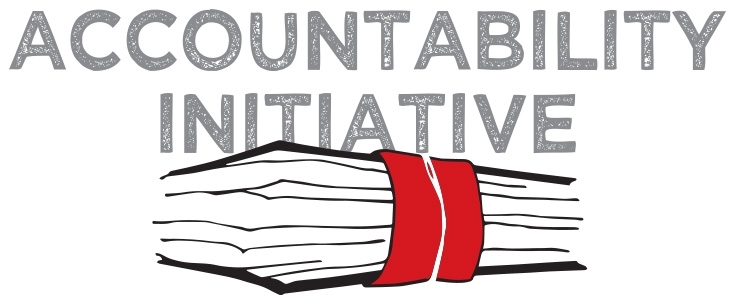
The RTI Act Turns 5
12 October 2010
The cornerstone of the UPA government’s agenda when it was elected to government in 2004, the RTI Act celebrates its fifth birthday today, 12 October 2010. Some might say that five years is not a long time in the history of a law, but perhaps no other legislation has captured the imagination of the public in quite the way the RTI Act has. Today, the right to information or “Soochna Ka Adhikar” (as it popularly known) has made its way into the everyday lexicon of most Indians. A recent study conducted by RAAG (Right to Information Analysis and Assessment Group) estimates that some 2 million RTIs were filed across the country in the first 3 years after the Act was passed (RaaG, 2009). That’s a lot of RTIs! People have filed RTIs to redress individual grievances, probe government policies and decisions, expose corruption and misuse of government resources and access their basic entitlements whether its ration cards, wage payments or driver’s licenses. At the Accountability Initiative we’ve used the RTI extensively to get budget and expenditure related data on centrally sponsored schemes and to get information on how department’s are complying with the RTI. We are also currently undertaking a small research study on the kinds of information people are seeking under the Act. We hope this analysis will help in identifying people’s information needs and assist departments in responding to these needs proactively.
 The RTI Act is a powerful tool which if used effectively can help bring in greater transparency and accountability in the functioning of government. But, the Act’s five year journey has not been without incident. As early as 2006, the government made attempts at trying to amend the RTI Act to exclude key provisions from public access. Though civil society groups successfully stalled such efforts to amend the Act, the issue is still very much alive. The Department of Personnel and Training (the nodal agency implementing the RTI Act) in recent months has confirmed that the government is considering amending the law to exempt “file notings” and “frivolous and vexatious” requests for information. Sources within the government state the amendments are necessary since departments cannot cope with the growing volume of RTI requests they are receiving. However this has more to do with the lack of adequate infrastructure and human resources in departments.
The RTI Act is a powerful tool which if used effectively can help bring in greater transparency and accountability in the functioning of government. But, the Act’s five year journey has not been without incident. As early as 2006, the government made attempts at trying to amend the RTI Act to exclude key provisions from public access. Though civil society groups successfully stalled such efforts to amend the Act, the issue is still very much alive. The Department of Personnel and Training (the nodal agency implementing the RTI Act) in recent months has confirmed that the government is considering amending the law to exempt “file notings” and “frivolous and vexatious” requests for information. Sources within the government state the amendments are necessary since departments cannot cope with the growing volume of RTI requests they are receiving. However this has more to do with the lack of adequate infrastructure and human resources in departments.
Citizens file RTI requests with government departments who are obligated to provide this information within a particular time frame. But this service delivery system is only as good or as efficient as the different links in the assembly chain.
Amendments to the RTI have not been the only roadblock on the Act’s journey. In recent weeks, RTI activists have questioned the lack of transparency in the selection and appointment procedures of Information Commissioners in the country. The recent appointment of AN Tiwari to the post of Chief Central Information Commissioner following the retirement of former Chief CIC Wajahat Habibullah has been severely criticized not only because Mr Tiwari is shortly set to retire in December but more so because the post of the Chief Information Commissioner is not intended to be a promotion post for other commissioners within the department. In other states as well, Information Commissions have increasingly become post-retirement hotspots for bureaucrats. The lack of transparency in the procedure for selecting information commissioners is a worrying trend and threatens to undermine the efficacy of an institution set up to champion and defend the RTI Act.
At yet another level, governments at various levels face a number of challenges in implementing the RTI effectively. Over the past few months, I’ve interacted with officials implementing the RTI Act in different departments in the Central government and Delhi government. Across the board they have the same stories to tell: departments lack the infrastructure, staff and often even space to effectively implement the RTI Act. Public Information Officers are overburdened and have little training on how to respond to RTI requests and receive little support from senior officials. The poor state of government records makes responding to RTIs a difficult and cumbersome task. These factors combined mean that government compliance with the RTI Act at various levels remains patchy, uneven and often half-hearted. While the officials I’ve interacted with have all unanimously agreed that the RTI Act is a welcome change, the general picture that seems to be emerging is that departments at various levels have not set in place the administrative machinery and infrastructure to effectively and efficiently implement the RTI Act.
The way I see it, the RTI is like any other service delivery system except that information is the key public good being provided. Citizens file RTI requests with government departments who are obligated to provide this information within a particular time frame. But this service delivery system is only as good or as efficient as the different links in the assembly chain. It’s really quite simple. What do you get when you have departments that are overburdened and undertrained with limited access to resources? A system which is basically inefficient and unresponsive. Evidence of this non-responsiveness is there for all of us to see in the growing pendency rate of complaints and appeals in Information Commissions across the country. If cases are likely to take up to a year or more to be heard, people are going to lose faith in the system and the RTI Act more generally.
Amending the RTI Act is merely a stop gap measure aimed at pacifying certain key factions within the bureaucracy and will not address the serious implementation issues cropping up. The real need of the hour is for governments at various levels to seriously commit themselves to implementing the Act more efficiently. As they say, where there is a will there is a way.
Mandakini is a Research Analyst with the Accountability Initiative.





